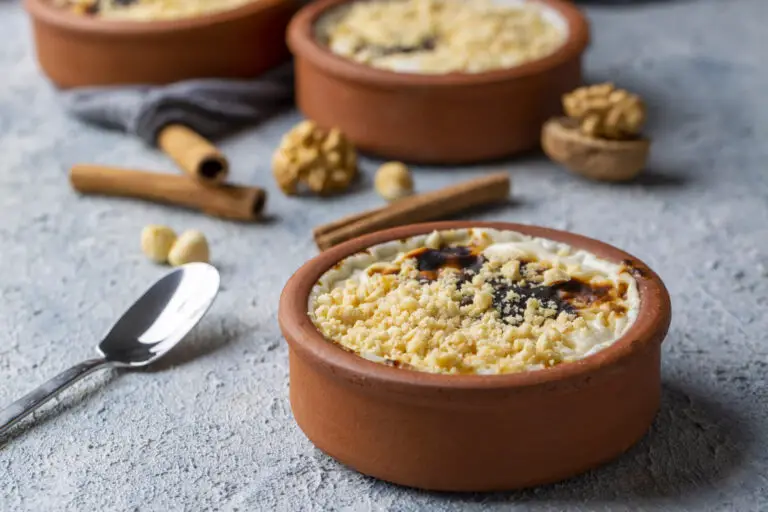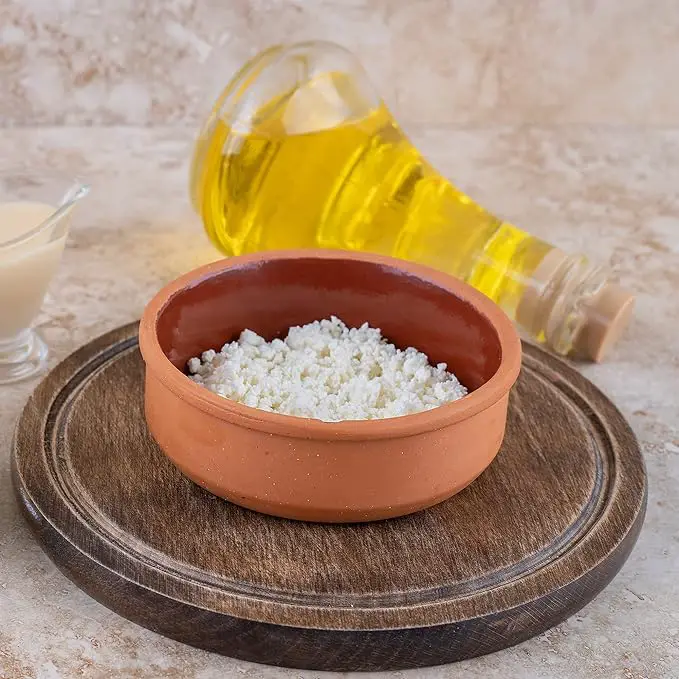Baked Rice Pudding (Sütlaç)
Rice pudding is a beloved dessert around the world, with many cultural variations. Sütlaç is a type of baked rice pudding from Turkey, where it is considered a specialty and often served during holidays and celebrations. With its creamy texture and sweet, nutty flavor, sütlaç is a treat worth learning to make properly. In this post, I’ll walk you through the keys to preparing authentic, delicious sütlaç at home.

The Rice: Using the Right Type
The foundation of great sütlaç is the rice. Traditional recipes call for short grain rice, which gives the pudding a creamy consistency when cooked. Long grain rice can be used, but won’t achieve the same velvety texture. The rice should also be washed thoroughly before cooking to remove excess starch. This helps prevent the pudding from becoming too gelatinous.
The Milk: Whole Milk is Best
Whole milk is preferred for sütlaç, as lower fat milks can’t achieve the full, rich flavor and consistency. Sheep’s milk is traditional, but cow’s milk works fine too. The rice is simmered in the milk until tender and immersed in the sweet liquid. This allows the grains to absorb the creamy dairy flavors. Skim or low-fat milk tends to make the pudding watery. For best results, opt for whole milk.
Cooking Technique: The Importance of Stirring
Pay close attention when cooking the rice and milk mixture. Frequent stirring is key to avoid burning the bottom and developing a skin on top. The rice and milk need to cook slowly at a low simmer, while being stirred often. After cooking, the pudding should be smooth and velvety. You don’t want a layer of crust or film forming during simmering. Patience and attentive stirring prevents this.
Flavorings: Simple Yet Impactful
Sütlaç is flavored modestly, letting the rice and milk shine. A vanilla bean is traditionally infused into the milk for subtle fragrance. Lemon zest adds a bit of brightness. For sweetness, sugar is essential, added once the rice is cooked. Some recipes include rose water or orange flower water for a floral note. These simple flavorings complement the rice pudding without overpowering it.
Serving Suggestions: Toppings & Accompaniments
There are many delicious ways to finish sütlaç. Cinnamon is the most common topping, lending warmth. Chopped pistachios or walnuts add crunch and nuttiness. Dried fruit like apricots or raisins provide subtle sweetness. Sütlaç can also be served with fresh fruit like sliced strawberries or poached quince. Whipped cream is another tasty pairing to balance the richness.
Baking Technique: Creamy Yet Crusted
After cooking, sütlaç is baked to achieve two textures: a creamy interior and a golden crust top. The pudding is transferred to individual ramekins, then lightly sprinkled with cinnamon. Baking in a hot oven at around 400°F allows the cinnamon to toast and caramelize into a delicate crust. But the inside remains luscious, like freshly cooked rice pudding. This contrast is the hallmark of well-made sütlaç.
Master this traditional Turkish dessert, and you’ll impress guests with your international cooking skills. Sütlaç is elegant yet straightforward – a special treat that feels fancy but isn’t too difficult. With soft, sweetly perfumed rice pudding encased in a crispy cinnamon crust, it’s easy to see why sütlaç has enduring popularity.

Baked Rice Pudding (Sütlaç) – A Turkish Dessert Worth Mastering
5 Stars 4 Stars 3 Stars 2 Stars 1 Star
No reviews
Baked Turkish rice pudding (Sütlaç) served in an earthenware casserole, enriched with creamy milk and vanilla, and topped with roasted hazelnuts for a delightful crunch.
Ingredients
1 cup short-grain rice (like Arborio)
4 cups water
4 cups whole milk
1 cup granulated sugar
1 tsp vanilla extract
A pinch of salt
1/2 cup hazelnuts, roasted and roughly chopped
1/2 tsp ground cinnamon (optional)
Zest of 1 lemon or orange (optional)
2 tbsp unsalted butter (for greasing the earthenware casserole)
Instructions
Preparation of Rice: Begin by washing the rice under cold water until the water runs clear. This helps to remove excess starch and ensures a creamy texture for the pudding.
Cooking the Rice: In a large saucepan, bring the 4 cups of water to a boil. Add the washed rice and a pinch of salt. Let it simmer on low heat until the rice is soft and the water is mostly absorbed, about 15-20 minutes.
Milk Addition: Once the rice is cooked, add the whole milk to the saucepan. Stir continuously on medium heat to prevent the milk from burning at the bottom.
Sweetening: When the milk starts to boil, reduce the heat to low and add the sugar and vanilla extract. Stir until the sugar is dissolved. If you’re using lemon or orange zest, add it now. Continue to cook on low heat, stirring occasionally, until the mixture thickens, about 20-25 minutes.
Earthenware Casserole: Preheat your oven to 375°F (190°C). Grease the inside of your earthenware casserole dish with the unsalted butter.
Transfer to Casserole: Once the rice mixture has thickened, pour it into the greased casserole dish. Smooth the top with a spatula.
Baking: Place the casserole in the preheated oven and bake for 20-25 minutes or until the top gets a golden-brown color.
Hazelnuts: Once out of the oven, sprinkle the roasted and chopped hazelnuts on top. If you like, you can also sprinkle some ground cinnamon for added flavor.
Serving: Allow the pudding to cool slightly before serving. It can be enjoyed both warm and cold.
Notes
The earthenware casserole gives the Sütlaç a unique flavor and texture, but if you don’t have one, you can use a regular baking dish.
- Author: Lindsey Chastain









